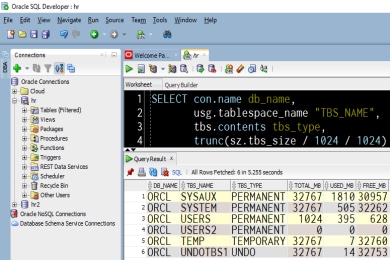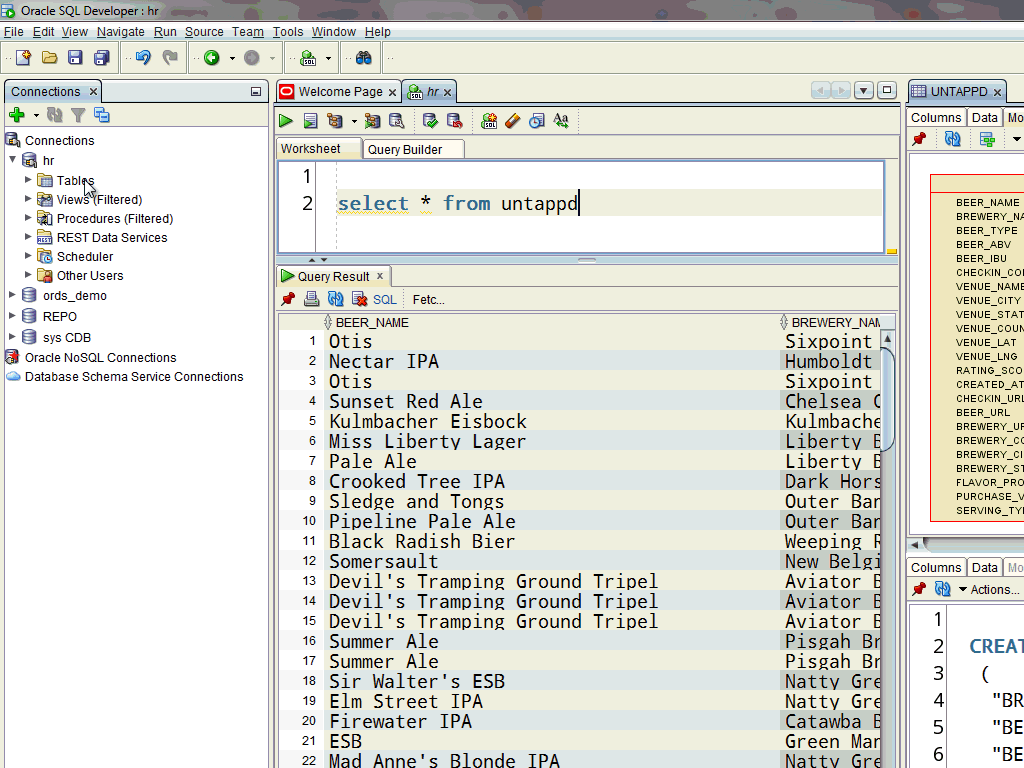Sql Developer Tool
Tnsnames.ora is a SQL*Net/Oracle Network Manager configuration file that describes databases and how to connect to them. The file contains the connection name, protocol, address, network port, and instance name. The tnsnames.ora file translates the Oracle Net service alias in the connection string to a network address, protocol, service, and instance name.
The tnsnames.ora plain text file is located on both the client and the server. Typically, this file is located under the oracle_homenetworkadmin directory.
You can make changes to the file using any text editor. On Windows, you can use notepad.exe, on *NIX systems — vi. Let’s look at an example of a simple tnsnames.ora file that describes one Oracle service alias.
de_mun_sap12 =
(DESCRIPTION =
(ADDRESS_LIST =
(ADDRESS = (PROTOCOL = TCP)(Host = de-mun-sap12.theitbros.com])(Port = 1522))
)
(CONNECT_DATA =
(SERVICE_NAME = de_mun_sap12)
)
)

This file describes one alias de_mun_sap12 that a user can use to connect to an Oracle database.
Hint. The tnsnames.ora file is syntax sensitive. Always check the correctness of new settings when making changes to this file.

Unzipping the SQL Developer kit causes a folder named sqldeveloper to be created under the folder (for example, C: Program Files sqldeveloper). It also causes many files and folders to be placed in and under that directory. To start SQL Developer, go to sqldeveloper, and double-click sqldeveloper.exe. SQL Developer does not require an installer. To install SQL Developer, you will need an unzip tool. You can download a free, cross-platform unzip tool, Info-Zip, available at http://www.info-zip.org/. There are many SQL management tools available in the market, and therefore it is challenging to select the best tool for your SQL project management. The following is a curated list of best SQL tools with key features, and download links. The list contains both open-source (FREE) and commercial (Paid) SQL software. 1) DBVisualizer. How do you do it in SQL Developer? How To Change The SQL Developer Format SQL Options. The formatting options inside SQL Developer are some of my favourite options in the program. Without this feature, my SQL writing would be a lot worse. To find these options, go to Tools Preferences (on Windows) or Oracle SQL Developer Preferences (on Mac. SQL Developer is a database administration and query tool that provides a single consistent interface for various databases. Visually navigate through your database structure, create and execute.
In some cases, when you specified the correct settings in the tnsnames.ora file and checked the correctness of the connection using tnsping, SQL Developer does not list available db connections.
Note. If you have installed the Oracle client software and configured connections in tnsnames.ora, Oracle SQL Developer automatically populates the Connections navigator pane. The alias list contains net service names defined in tnsnames.ora.
By default, Oracle SQL Developer looks for the tnsnames.ora file in the oracle_home /network/admin/tnsnames.ora folder, as well in the following registry keys:
Hint. On Windows, you can use the system and local versions of the tnsnames.ora file. The system version is located in the oracle_home/network/admin/tnsnames.ora. The local version of the tnsnames.ora file may be located in the current working directory from which the application is running. Those, you can have multiple local tnsnames.ora files in different directories from which you run your application (although this is not recommended).


If the list of connections is empty, then SQL Developer didn’t find the tnsnames.ora file in the specified directories. You can specify the path to the tnsnames.ora file manually.
Sql Developer Tool Training
- Start SQL Developer and go to Tools > Preferences;
- In the Preferences option, expand the Database component, click on Advanced, and under the “Tnsnames Directory”, browse to the folder where your tnsnames.ora file is located;
- Restart SQL Developer;
- Now in SQL Developer select Connections and click New Connection;
- Select the TNS connection type from the drop-down list;
- And you are done! Now all network aliases from tnsnames.ora will appear in the list of available connections.
 Latest posts by Brian Jackson (see all)
Latest posts by Brian Jackson (see all)